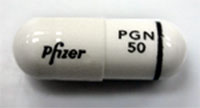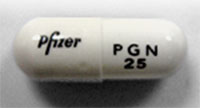Many Medicines Look Alike – Always Read the Label!
2013-05-29
SafeMedicationUse.ca has received several reports about consumers who took the wrong medicine or the wrong dose of a medicine because of mix-ups with products that were similar in appearance. These consumers relied on the appearance of tablets, capsules, or packages to identify their medicines, instead of reading the labels carefully.
In one case, an elderly consumer confused alendronate and atorvastatin. Alendronate is used to treat or prevent osteoporosis. Atorvastatin is used to lower cholesterol and other fats in the blood. Both products come as white tablets. The consumer was supposed to take alendronate once a week and atorvastatin once a day. However, the consumer took alendronate every day for several days, thinking it was atorvastatin. As a result, the consumer took extra doses of alendronate (the osteoporosis medicine) and missed several doses of atorvastatin (the cholesterol medicine).
Some medicines look a lot like other medicines. There can also be similarities in the colour and appearance of packages, or in the sound or spelling of drug names. Choosing your medicine based on its appearance, instead of carefully reading the label, could lead to an error that might cause serious harm. Here is some advice to help you avoid being harmed by this type of mistake.
- Always read the label of the original package carefully before taking any medicine or before placing a dose into a pill organizer. Most people know that reading the label is important, but human nature sometimes leads us to make assumptions and take shortcuts. Make safe practices a habit. Establish a routine for preparing and taking your medicines. Be consistent about reading the label carefully before you take a medicine. If you use pill organizers, check the label of every medicine before placing a dose into the organizer. Label your pill organizer with your full name, especially if other family members are also using pill organizers. If you have trouble reading the labels on any of your medicines, ask your pharmacist for help.
- Read the label carefully before buying any non-prescription medicine. Similarities in product names, labels, and packages can be confusing for consumers. Read more. Reading the label carefully and asking a pharmacist for advice are ways to be sure you are getting the right medicine. You should also ask the pharmacist whether a non-prescription product could interact with another medicine you are taking. Read more
- Many tablets and capsules are marked with identifying letters, numbers, or other symbols. Become familiar with the markings on products that you take regularly. Consider making a note of each medicine's appearance and markings on your list of medicines. Before taking a dose of any medicine, first check the label to make sure you have the right medicine. Then verify that the appearance and the identifying markings on the medicine match what you expect to see. This step-by-step process is especially helpful if you are taking medicines from a pill organizer or from a blister pack that has been prepared by your pharmacy. If you notice any differences in markings, check with your pharmacist to verify that you have the correct medicine.
- Check every medicine carefully whenever you pick up your prescriptions from the pharmacy. Take note of the appearance and identifying marks on each medicine. Review the instructions on the label with your pharmacist. Ask whether any changes have been made to your prescription. If you have any concerns or if any of the information does not match what you were expecting to see or hear, tell your pharmacist. For more information, see the SafeMedicationUse.ca article "Safe Practices for Medication Use".
- If you realize that a mix-up with medicines has happened, contact a health professional for advice as soon as possible.
|
Check Whether Your Prescription Has Been Changed!
A consumer had been receiving 25 mg capsules of Lyrica (pregabalin), a medicine that is sometimes used to treat pain. The doctor changed the prescription to 50 mg capsules and reduced the number of capsules to be taken daily.
Lyrica 25 mg and Lyrica 50 mg are both white capsules with black lettering. Lyrica 25 mg capsules have the identifying code "PGN 25" printed on the body with no surrounding ink band. The 50 mg capsules are marked with the code “PGN 50” and a black ink band (see Figure 1 and Figure 2 below). The consumer did not notice any of the changes and continued to take the same number of capsules each day. As a result, the consumer received double the intended dose for a full week before a family member noticed the problem.
This is a good example of why it's important to know what medicines and doses you are taking and to be familiar with the identifying markings on your medicines. It is also an example of why it's important to check every prescription carefully before you leave the pharmacy and to ask your pharmacist whether there have been any changes. And, of course, continue to read the label carefully!
 - Figure 2
Lyrica 50 mg capsule
 - Figure 1
Lyrica 25 mg capsule
|
|

